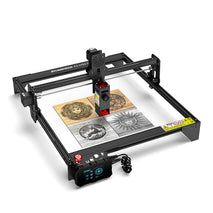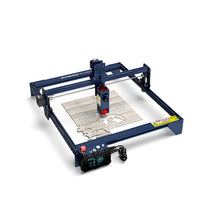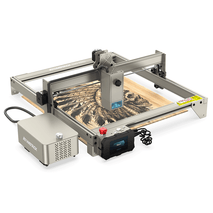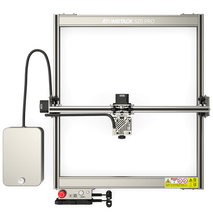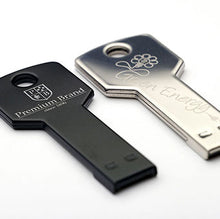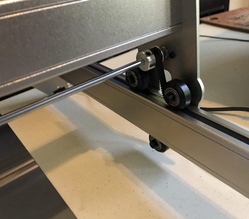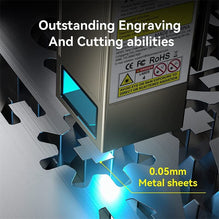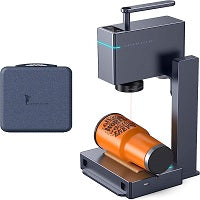
Several steps of how laser marking works
Laser marking is the process of marking parts or workpieces using laser technology. The laser beam hits the material and its energy reacts, leaving a permanent mark. The speed, power and focus of the laser beam on the part will result in different laser processes. You can mark using laser engraving, laser etching, laser annealing or laser ablation.
Selecting the correct laser technology and configuration is key to successfully marking parts. To determine your needs, you must first define your application requirements. This includes the following information:
Your part material, size and geometry
your available marker time
your production process
Read on to learn how these requirements will help you determine the laser system, power and process you need for laser marking.
1. All materials have absorption spectra
Most industrial laser systems emit wavelengths that are invisible to the naked eye, making them difficult to visualize. However, different materials respond differently to different wavelengths.
Each material has a unique composition that absorbs certain wavelengths and not others. Because lasers produce a single wavelength, they are highly specialized tools for marking very specific materials. Therefore, different materials have different laser requirements.
Depending on your material, you will need a fiber laser system or a CO2 laser system.
2. Fiber optic and CO2 laser systems produce different wavelengths
The various types of lasers emit at different wavelengths depending on their gain medium (an integral part of the laser source). The material you want to mark will determine which type of laser marking system you need.
Fiber Laser Systems Best for Metal Marking
Fiber laser systems are sometimes referred to as solid state lasers. They have a laser source that includes optical fibers containing rare earth metals such as ytterbium. They produce laser light with a wavelength of about 1 micron (1064 nanometers). Most metals respond well to fiber laser marking.
Gas laser systems are best suited for marking organic materials
Gas laser systems have a laser source that contains a gas. The most widely known gas lasers are carbon dioxide lasers. These laser marking systems can produce laser light in the wavelength range of 9 microns to 10.2 microns (9,000-12,000 nm). Most organic compounds respond well to these wavelengths. But in contrast to fiber laser systems, metals respond poorly to these wavelengths.
3. Each laser marking process offers different possibilities
Your application will determine which laser marking process you need. For example, you may need to create high-strength marks that cannot be erased. Alternatively, you may need to adjust your marking process within a specific cycle time.
To choose a laser process, you must understand your needs and production process.
The laser engraving process is used to obtain corrosion-resistant markings
Laser engraving engraves marks deep within the material by breaking down parts of the material into dust. For example, laser engravers can be used for VIN marking, which often requires deep marking to ensure durability and prevent counterfeiting. They can also be used for markings that need to withstand aggressive post-treatments such as shot peening.
Laser etching for high-speed and high-contrast marking
Laser etching is often used when the laser marking process must be integrated into the production line as quickly as possible. The technique melts the surface of the material almost instantly, creating high and low bumps on the surface of the material. For example, this creates high-contrast black and white marks.
Laser annealing is used to protect the material from damage
Laser annealing causes chemical changes beneath the material's surface. Nothing is broken down, nothing is displaced, nothing is melted. It is one of the only solutions for marking stainless steel, where the surface must remain unaffected by the marking. Laser annealing is also used for aesthetic applications such as signage. Although slower than other laser marking processes, it creates the most beautiful surface finish.
Laser ablation can be used to mark by removing the coating
Laser ablation creates marks by removing something other than material, usually paint, from a surface. Part of the paint can be removed to mark identifiers such as barcodes. Laser ablation is the same as laser cleaning. The only difference is application: the goal is to mark, not clean. In some cases, laser ablation is the fastest laser marking solution. For example, removing paint is faster than marking steel.
Depending on your material, different processes are available
Click on your material to learn which laser processes are available to you:
aluminum
steel
Stainless steel
magnesium
lead
PVC plastic
polyethylene
plastic
4. The pulsed laser beam has a higher energy density
Higher energy densities can be obtained if the laser power is increased. Because different laser marking technologies require different energy densities, certain applications may require greater laser power. Laser engraving, for example, is the marking technique that requires the highest energy density.
But the higher the power, the higher the cost. Fortunately, if increasing laser power is the key to increasing the energy density of a laser beam, it is not the only way.
The laser beam can be pulsed or continuous. Continuous wave lasers emit a laser beam at a continuous rate. A pulsed laser emits a laser beam at a set repetition rate.
When the laser beam is pulsed, higher energy peaks can be achieved at the same laser power. It's like hitting a nail with a hammer. The faster you hit, the less force you get with each hit.
Therefore, pulsed laser systems can be used for marking applications that require higher power densities than continuous wave laser systems. They can also perform tasks at higher speeds.
We manufacture laser engraving systems that fire a pulsed or continuous laser beam. Because metals require higher energy densities than organic materials, fiber laser systems use pulsed laser beams, while CO2 systems use continuous laser beams.
5. Lasers are the marking solution for all types of manufacturing
More and more manufacturing industries are choosing lasers as their marking solution. And for good reason.
Laser marking provides complete traceability
With laser marking, you can mark your parts directly and permanently. Unlike other marking methods, the marking process can be performed at the beginning of the production line.
Even if marking is performed before treatments such as shot peening and e-coating, you can maintain high-quality markings throughout the life of the part. You don't need to worry about the quality of Data Matrix codes, barcodes or alphanumeric serial numbers.
No consumables
No consumables simplifies marking operations and helps improve workplace health and safety by replacing techniques that use chemicals or inks. Getting rid of consumables is also cost-effective as you reduce your annual operating costs.
Selecting the correct laser technology and configuration is key to successfully marking parts. To determine your needs, you must first define your application requirements. This includes the following information:
Your part material, size and geometry
your available marker time
your production process
Read on to learn how these requirements will help you determine the laser system, power and process you need for laser marking.
1. All materials have absorption spectra
Most industrial laser systems emit wavelengths that are invisible to the naked eye, making them difficult to visualize. However, different materials respond differently to different wavelengths.
Each material has a unique composition that absorbs certain wavelengths and not others. Because lasers produce a single wavelength, they are highly specialized tools for marking very specific materials. Therefore, different materials have different laser requirements.
Depending on your material, you will need a fiber laser system or a CO2 laser system.
2. Fiber optic and CO2 laser systems produce different wavelengths
The various types of lasers emit at different wavelengths depending on their gain medium (an integral part of the laser source). The material you want to mark will determine which type of laser marking system you need.
Fiber Laser Systems Best for Metal Marking
Fiber laser systems are sometimes referred to as solid state lasers. They have a laser source that includes optical fibers containing rare earth metals such as ytterbium. They produce laser light with a wavelength of about 1 micron (1064 nanometers). Most metals respond well to fiber laser marking.
Gas laser systems are best suited for marking organic materials
Gas laser systems have a laser source that contains a gas. The most widely known gas lasers are carbon dioxide lasers. These laser marking systems can produce laser light in the wavelength range of 9 microns to 10.2 microns (9,000-12,000 nm). Most organic compounds respond well to these wavelengths. But in contrast to fiber laser systems, metals respond poorly to these wavelengths.
3. Each laser marking process offers different possibilities
Your application will determine which laser marking process you need. For example, you may need to create high-strength marks that cannot be erased. Alternatively, you may need to adjust your marking process within a specific cycle time.
To choose a laser process, you must understand your needs and production process.
The laser engraving process is used to obtain corrosion-resistant markings
Laser engraving engraves marks deep within the material by breaking down parts of the material into dust. For example, laser engravers can be used for VIN marking, which often requires deep marking to ensure durability and prevent counterfeiting. They can also be used for markings that need to withstand aggressive post-treatments such as shot peening.
Laser etching for high-speed and high-contrast marking
Laser etching is often used when the laser marking process must be integrated into the production line as quickly as possible. The technique melts the surface of the material almost instantly, creating high and low bumps on the surface of the material. For example, this creates high-contrast black and white marks.
Laser annealing is used to protect the material from damage
Laser annealing causes chemical changes beneath the material's surface. Nothing is broken down, nothing is displaced, nothing is melted. It is one of the only solutions for marking stainless steel, where the surface must remain unaffected by the marking. Laser annealing is also used for aesthetic applications such as signage. Although slower than other laser marking processes, it creates the most beautiful surface finish.
Laser ablation can be used to mark by removing the coating
Laser ablation creates marks by removing something other than material, usually paint, from a surface. Part of the paint can be removed to mark identifiers such as barcodes. Laser ablation is the same as laser cleaning. The only difference is application: the goal is to mark, not clean. In some cases, laser ablation is the fastest laser marking solution. For example, removing paint is faster than marking steel.
Depending on your material, different processes are available
Click on your material to learn which laser processes are available to you:
aluminum
steel
Stainless steel
magnesium
lead
PVC plastic
polyethylene
plastic
4. The pulsed laser beam has a higher energy density
Higher energy densities can be obtained if the laser power is increased. Because different laser marking technologies require different energy densities, certain applications may require greater laser power. Laser engraving, for example, is the marking technique that requires the highest energy density.
But the higher the power, the higher the cost. Fortunately, if increasing laser power is the key to increasing the energy density of a laser beam, it is not the only way.
The laser beam can be pulsed or continuous. Continuous wave lasers emit a laser beam at a continuous rate. A pulsed laser emits a laser beam at a set repetition rate.
When the laser beam is pulsed, higher energy peaks can be achieved at the same laser power. It's like hitting a nail with a hammer. The faster you hit, the less force you get with each hit.
Therefore, pulsed laser systems can be used for marking applications that require higher power densities than continuous wave laser systems. They can also perform tasks at higher speeds.
We manufacture laser engraving systems that fire a pulsed or continuous laser beam. Because metals require higher energy densities than organic materials, fiber laser systems use pulsed laser beams, while CO2 systems use continuous laser beams.
5. Lasers are the marking solution for all types of manufacturing
More and more manufacturing industries are choosing lasers as their marking solution. And for good reason.
Laser marking provides complete traceability
With laser marking, you can mark your parts directly and permanently. Unlike other marking methods, the marking process can be performed at the beginning of the production line.
Even if marking is performed before treatments such as shot peening and e-coating, you can maintain high-quality markings throughout the life of the part. You don't need to worry about the quality of Data Matrix codes, barcodes or alphanumeric serial numbers.
No consumables
No consumables simplifies marking operations and helps improve workplace health and safety by replacing techniques that use chemicals or inks. Getting rid of consumables is also cost-effective as you reduce your annual operating costs.
Older Post
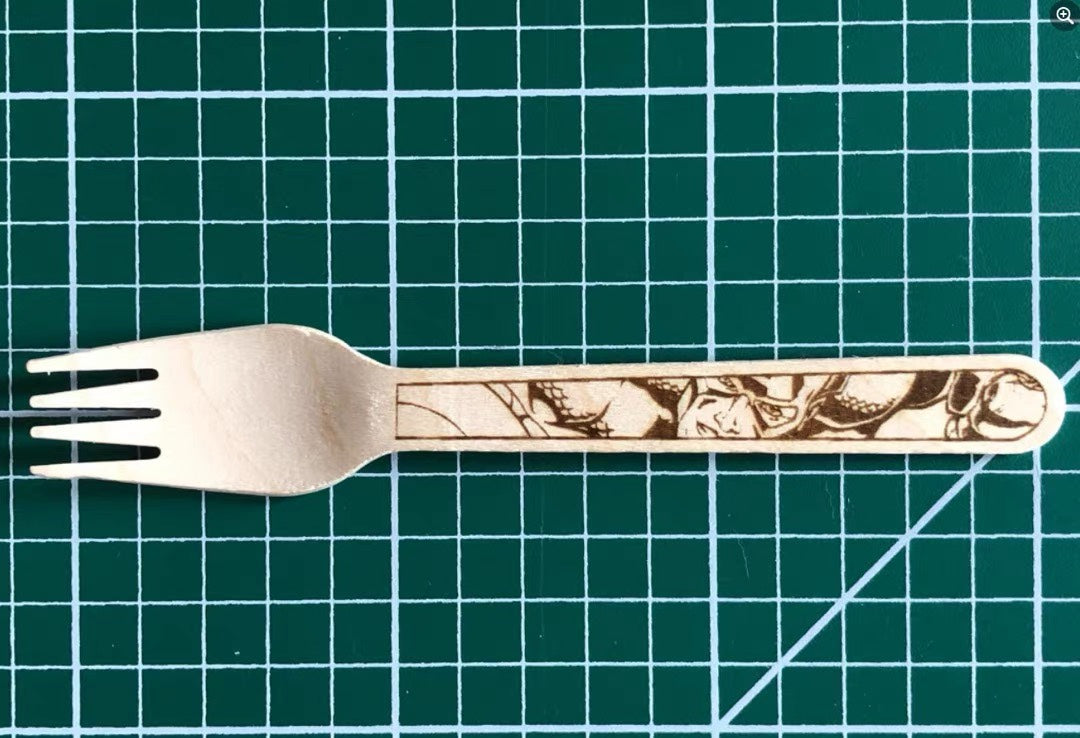 Newer Post
Newer Post
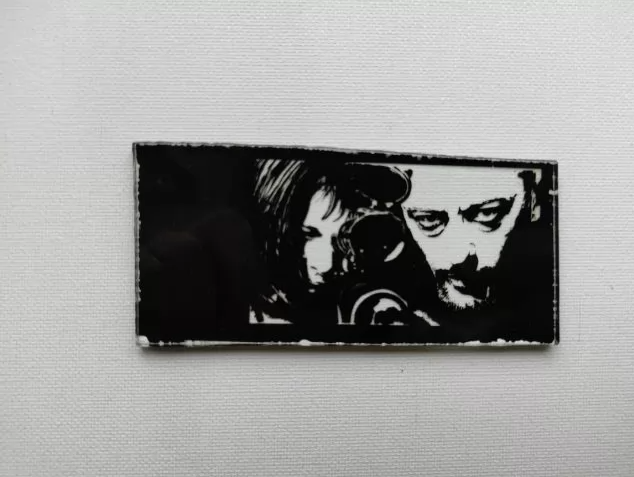
What is laser engraving and how does it work?

The Power of Laser Engraving for Schools


